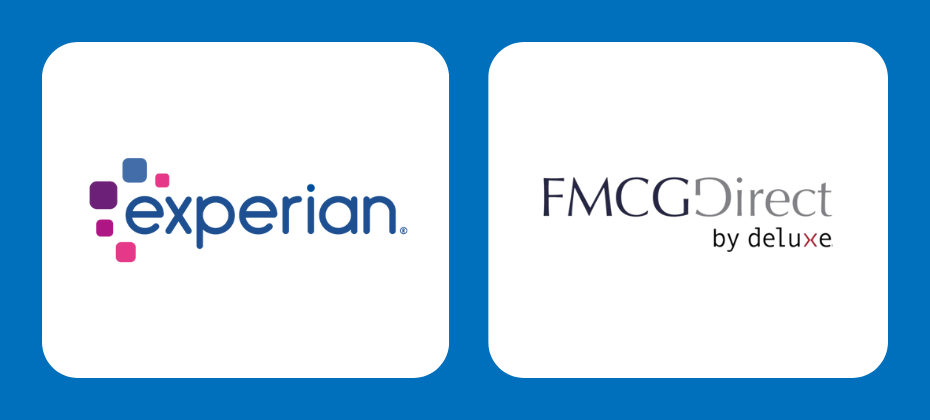“Lorem ipsum dolor sit amet, consectetur adipiscing elit, sed do eiusmod tempor incididunt ut labore et dolore magna aliqua. Ut enim ad minim veniam, quis nostrud exercitation ullamco laboris nisi ut aliquip ex ea commodo consequat. Duis aute irure dolor in reprehenderit in voluptate velit esse cillum dolore eu fugiat nulla pariatur. Excepteur sint occaecat cupidatat non proident, sunt in culpa qui officia deserunt mollit anim id est laborum.”

“Lorem ipsum dolor sit amet, consectetur adipiscing elit, sed do eiusmod tempor incididunt ut labore et dolore magna aliqua. Ut enim ad minim veniam, quis nostrud exercitation ullamco laboris nisi ut aliquip ex ea commodo consequat. Duis aute irure dolor in reprehenderit in voluptate velit esse cillum dolore eu fugiat nulla pariatur. Excepteur sint occaecat cupidatat non proident, sunt in culpa qui officia deserunt mollit anim id est laborum.”
“Lorem ipsum dolor sit amet, consectetur adipiscing elit, sed do eiusmod tempor incididunt ut labore et dolore magna aliqua. Ut enim ad minim veniam, quis nostrud exercitation ullamco laboris nisi ut aliquip ex ea commodo consequat. Duis aute irure dolor in reprehenderit in voluptate velit esse cillum dolore eu fugiat nulla pariatur. Excepteur sint occaecat cupidatat non proident, sunt in culpa qui officia deserunt mollit anim id est laborum.”

“Lorem ipsum dolor sit amet, consectetur adipiscing elit, sed do eiusmod tempor incididunt ut labore et dolore magna aliqua. Ut enim ad minim veniam, quis nostrud exercitation ullamco laboris nisi ut aliquip ex ea commodo consequat. Duis aute irure dolor in reprehenderit in voluptate velit esse cillum dolore eu fugiat nulla pariatur. Excepteur sint occaecat cupidatat non proident, sunt in culpa qui officia deserunt mollit anim id est laborum.”
test page quote
“Lorem ipsum dolor sit amet, consectetur adipiscing elit, sed do eiusmod tempor incididunt ut labore et dolore magna aliqua. Ut enim ad minim veniam, quis nostrud exercitation ullamco laboris nisi ut aliquip ex ea commodo consequat. Duis aute irure dolor in reprehenderit in voluptate velit esse cillum dolore eu fugiat nulla pariatur. Excepteur sint occaecat cupidatat non proident, sunt in culpa qui officia deserunt mollit anim id est laborum.”
My Heading Test

“Lorem ipsum dolor sit amet, consectetur adipiscing elit, sed do eiusmod tempor incididunt ut labore et dolore magna aliqua. Ut enim ad minim veniam, quis nostrud exercitation ullamco laboris nisi ut aliquip ex ea commodo consequat. Duis aute irure dolor in reprehenderit in voluptate velit esse cillum dolore eu fugiat nulla pariatur. Excepteur sint occaecat cupidatat non proident, sunt in culpa qui officia deserunt mollit anim id est laborum.”
veniam, quis nostrud exercitation ullamco laboris nisi ut aliquip ex ea commodo consequat. Duis aute irure dolor in reprehenderit in voluptate velit esse cillum dolore eu fugiat nulla pariatur.
Excepteur sint occaecat cupidatat non proident, sunt in culpa qui officia deserunt mollit anim id est laborumExcepteur sint occaecat cupidatat non proident, sunt in culpa qui officia deserunt mollit anim id est laborumExcepteur sint occaecat cupidatat non proident, sunt in culpa qui officia deserunt mollit anim id est laborum

Public attitudes are more open and accepting of LGBT Americans today, and marketers are increasingly showing their support of their LGBT customers. Experian Simmons includes a measure of sexual orientation among non-Hispanic respondents of our National Consumer Study, the only known large probability sample syndicated study to include such a measure. In our 2012 LGBT Demographic Report, we looked at marriage and cohabitation habits, as well as income levels and discretionary spend of LGBT and heterosexual adults alike. This data helps marketers better understand and connect to the growing and already influential LGBT demographic and to benchmark important factors against the heterosexual population. A look into individual earnings and household incomes shows that lesbian women earn more than heterosexual women regardless of relationship status. Specifically, the typical adult lesbian woman personally earns $43,100 per year compared with $37,600 claimed by the average heterosexual woman. Furthermore, the typical household income of a married or partnered lesbian woman is $7,200 higher than that of a married or partnered heterosexual woman. Mean individual earnings and household income of women, by sexual orientation When it comes to individual income, gay and straight men may earn roughly the same amount, but married or partnered gay men personally take home nearly $8,000 more, on average, than their straight counterparts. Additionally, the average household income of a married or partnered gay man is $116,000 versus $94,500 for a straight married or partnered man. Mean individual earnings and household income of men, by sexual orientation Income levels are important to consider when targeting consumers, but more important is determining the amount of money they have left over after the bills are paid for non-essentials. Despite having higher incomes, some may be surprised to learn that lesbian women have only the same amount as heterosexual women to spend on discretionary items. Likewise, gay men have less than heterosexual men for non-essentials overall, even though their incomes overall are quite equal. This is mostly likely due to the fact that both lesbian and gay adults tend to reside in larger cities where the cost of living can be considerably higher. Interestingly though, when household size is brought into the equation, we see that gay males actually have more to spend on non-essentials per capita than straight men. Gay men, for instance, live in households that spend $6,256 per capita annually on discretionary spending, nearly $1,000 more than what the households of heterosexual men spend per person. For more demographic and attitudinal information on the trends among the LGBT population, download the 2012 Lesbian, Gay, Bisexual, Transgendered Demographic Report.

My Experian Marketing Services’ colleagues and resident data experts Bill Tancer and Marcus Tewskbury answered the above question for marketers during our recent 2012 Holiday Planning Webinar. The webinar recapped key 2011 holiday marketing results, plus featured trends, benchmarks and recommendations for a successful and profitable 2012 holiday shopping season. Here are a few cool facts: For the first time, last year’s Cyber Monday beat Thanksgiving Day as the busiest online shopping day of the year Facebook and Pinterest were the top traffic sources to the Experian Marketing Services Retail 500 Pinterest visitors most often went to etsy.com and amazon.com from the pinterest.com site Dynamic content in emails can drive up to a 70% lift in open rates Tying web, email and in-store promotions together enhances the shopping experience and improves sales The bottom line is that marketers need to understand where there customers are, when they are there, and what they are doing. Armed with that knowledge, you can deliver personalized and targeted holiday messages that are sure to make this shopping season merry and bright (and profitable!). View the webinar to learn more.

Even though most kids haven’t even completed their current school year, now is the time for retailers to start preparing their 2012-2013 back-to-school marketing strategies. I remember growing up as a kid in rural Massachusetts thinking about how “back-to-school” TV ads were so irritating. Back-to-school? In July? I’m not even half way through my summer vacation! Little did I know back then that marketers like to get an early start to the back-to-school sales season by planting seeds with their target audience and hoping those seeds grow into a healthy crop of new customers. This remains true today and planting season starts even earlier. The back-to-school sales season represents a huge opportunity for marketers. Here are some facts and figures that help quantify the size of the market: According to the National Retail Federation, consumers will spend approximately $70 billion on back-to-school merchandise. About $23 billion of this is spending by parents of children in kindergarten through 12th grade. The remainder represents spending by students starting or returning to college. All told, the back-to-school season is the second largest consumer spending event for retailers outside of the winter holidays. According to the U.S. Census Bureau, this year there will be over 55 million students enrolled in schools from pre-kindergarten through high school. About 56% of these students are in grades one through eight, 28% are in high school and 15% are enrolled in preschool or kindergarten. About one-third of households contain children under age 18. That translates to roughly 38 million households. The vast majority of these contain school-age children. The back-to-school season is not just about reaching kids in elementary school, middle school, junior high school and high school. Another 20 million students are expected to be attending college. That’s a huge opportunity to sell things like dorm room furnishings, electronic gadgets and computers, just to name a few. With every marketing opportunity come certain marketing challenges. It’s never easy. Marketers of back-to-school products face their own set of challenges when vying for the attention of parents of school-age children. Here are some specific examples: Who are my key targets and how can I differentiate my marketing message? Targeting a market that includes a vast array of families with contrasting attitudes, opinions, motivations, lifestyles and shopping behaviors is incredibly challenging. Not all of these families are working from the same shopping list. And not all of these families will respond to the same marketing message. Segmenting your market into finer target audiences is highly recommended. How should my marketing budget be allocated across multiple online and offline channels? You have multiple sales and marketing channels to consider. You don’t want to build a marketing plan without a well-defined strategy for reaching your best targets. For instance, moms have a greater propensity to have a smartphone compared to the overall adult population. Thus, marketers should then be thinking about integrating mobile applications into their overall strategy. What can I do to make my message stand out above the crowd? Put yourself in the consumer’s shoes. I’m sure some of you are parents with children in school or in college. It’s a very crowded and cluttered back-to-school marketplace with many, many retailers clamoring for attention. One idea for standing above the crowd is to start by identifying your existing customers who are most likely to have families with children. Then send them an email early in the summer with suggestions for fun things to do this summer season. This can be followed up later with an email campaign containing some tips about getting ready for back-to-school. The key is to grab their attention and start engaging early. What variety of offers and promotions will enable me to capture a significant share of back-to-school expenditures? To capture your fair share of the back-to-school market you’ll need to develop offers and promotions that are both enticing and relevant. This requires learning as much as you can about your prospects and what motivates them to buy. For instance, a typical mom with elementary school-age children might enter the back-to-school season with the following thoughts: “I want to buy him the cool gear to go back to school with: new clothes, shoes, backpack and lunch box. And I don’t mind, I actually LOVE back to school shopping.”* That mom may quickly respond to your marketing message. Or, you could have a mom with these thoughts: “I’m not upper class – we’re in the lower/middle income bracket and money is tight for us. I budget for school expenses as I would anything else…and I won’t have my son miss out because ‘we can’t afford’ something… I’d give up something else first.”* She loves shopping for back-to-school, she has budget limitations, and she’s willing to make certain adjustments to her budget with the best interests of her child in mind. If you knew what she was most likely to be thinking, do you think it would influence the messaging and offers you would use to attract her? Well, of course. Attitudes shape shopping behavior. ___________________________________________________________________________________ Watch our recent webinar about planning your back-to-school marketing campaigns in style. And stay tuned for part two of my blog series on the topic in a few days. *Feedback was compiled from PHD in Parenting: http://www.phdinparenting.com/2011/08/22/who-should-pay-for-school-supplies/







